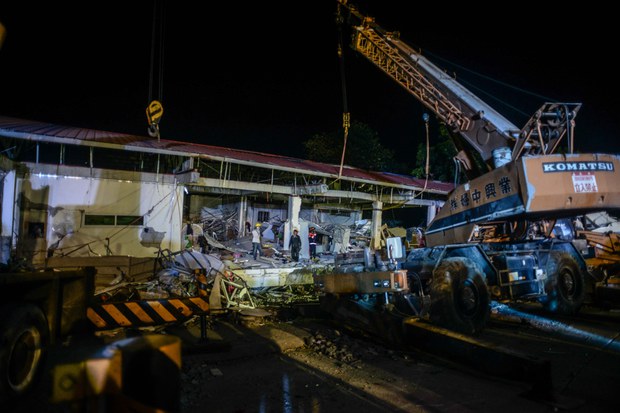World Bank Approves $300M Loan to Philippines for Quake-Proofing Projects
2021.06.03
Manila
 Volunteers use heavy equipment to rescue dozens of victims buried under the rubble of a four-story supermarket in the town of Porac, Pampanga, in the northern Philippines, after a 6.1-magnitude earthquake hit the region, April 22, 2019.
Volunteers use heavy equipment to rescue dozens of victims buried under the rubble of a four-story supermarket in the town of Porac, Pampanga, in the northern Philippines, after a 6.1-magnitude earthquake hit the region, April 22, 2019.
The World Bank has approved a U.S. $300 million loan to the Philippines to help make buildings in Metro Manila earthquake-proof and improve the government’s emergency response in the event of a major temblor.
During the past 50 years, more than 15 destructives earthquakes have shaken the Philippines – with four major seismic events of magnitudes greater than 6.5 occurring in November-December 2019 alone – the World Bank said in a statement Wednesday.
“The World Bank’s Board of Executive Directors has approved today U.S. $300 million funding for a new project designed to enhance the safety and seismic resilience of selected public buildings in Metro Manila and strengthen the capacity of the Department of Public Works and Highways (DPWH) to prepare for and respond to emergencies,” the multilateral lending agency said.
The funds will be used to upgrade some 425 public buildings in the National Capital Region. They will also be used to improve the public works department’s response to other hazards, including typhoons, volcanic eruptions, floods and pandemics, the World Bank said.
These enhancements, to be implemented by the Philippines Seismic Risk Reduction and Resilience Project, would reduce risks from earthquakes and other hazards for about 300,000 teachers, students, doctors, patients, and staff who use these facilities, the bank said.
“Metro Manila or the National Capital Region is the seat of government and the country’s population, economic and cultural center,” Ndiamé Diop, the bank’s country director for several Southeast Asian countries, including the Philippines, said in the statement.
“Enhancing the safety of its buildings and structures while boosting institutional response to disasters will help protect the lives and safety of more than 12 million residents, including the poor and most vulnerable.”
‘The Big One’
Metro Manila is particularly vulnerable because of fault lines that run through the region, including the most threatening West Valley Fault, the World Bank said.
A study conducted by the Japanese and Philippine governments in 2004 had said that “The Big One,” or a 7.2-magnitude temblor along the West Valley Fault would lead to some 48,000 deaths and up to $48 billion in economic losses, the World Bank said.
In May 2018, President Rodrigo Duterte signed an executive order that created the program management office for earthquake resilience in Manila and its suburbs.
The order defined the responsibilities of government agencies to strengthen the country’s resilience to quakes, and to ensure public safety and government continuity.
The Southeast Asian archipelago nation is located in the so-called Pacific Rim of Fire, with at least 60 percent of the Philippines’ land area exposed to multiple hazards such as frequent earthquakes, floods, landslides, and cyclones.
In December 2019, an earthquake with a magnitude of 6.9 shook large parts of southern Mindanao Island, killing at least five people and injuring dozens.
In July 1990, a 7.7-magnitude earthquake on Luzon Island, killed more than 1,600 people, with many of them trapped inside a hotel that crumbled in the northern mountain resort city of Baguio.







